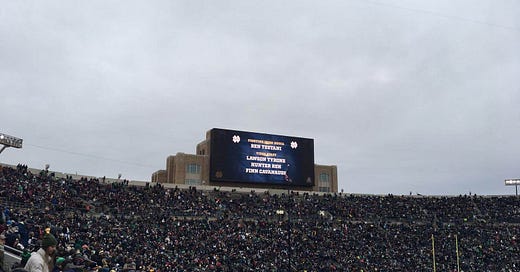For someone who never quite had the makings of a varsity athlete, I have quite the familial connection with football.
I spent my four years of undergrad working for Notre Dame athletics, primarily with the football team. My middle brother played college football for one of the nation’s premier Division Three programs, the Ithaca Bombers, and he currently serves as an assistant with our former high school’s team while also working part-time with the Syracuse Orange.
Meanwhile, my two younger siblings each recently started new jobs related to football — one as an SEC video production coordinator and the other working the sidelines as an athletic trainer — and my dad is preparing for another season refereeing high school games across Central New York.
My experience is far from unique. Writers, politicians, and your grandfather love to wax poetic about baseball as America’s Pastime, but football is the tru…
Keep reading with a 7-day free trial
Subscribe to I've Ben Thinking to keep reading this post and get 7 days of free access to the full post archives.




